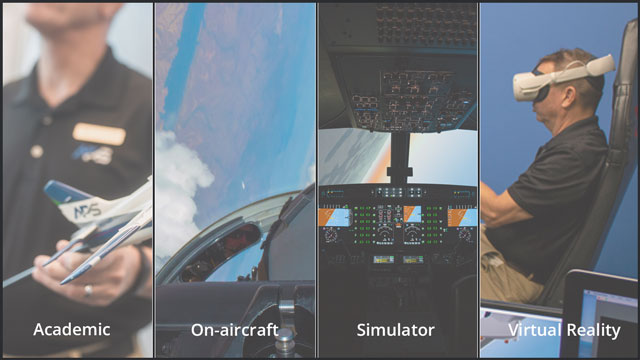Upset Prevention and Recovery Training (UPRT) mitigates the number one fatal risk pilots face on every flight — Loss of Control In-flight (LOC-I). However, this statement is only true if UPRT is properly delivered by a qualified instructor through a seamless integration of different training mediums in order to fully develop pilot skills that are both comprehensive and resilient. In fact, effective UPRT integrating the correct platforms according to the EPIC-S2™ UPRT standard offers pilots and flight organizations a host of safety advantages. Let’s take a look at the critical considerations for integrating training mediums.

Safety
Safety is always the cornerstone of effective pilot training. Whether it is the safety of the training itself, or the actual safety skills pilots will learn through the training, ensuring pilots bring everyone home safely, including themselves, is the paramount goal.
While on-aircraft upset training is undeniably the only way to ensure pilots learn upset prevention and recovery skills in a real-world setting that accounts for human factors, the simple truth is, some scenarios pilots need to practice for comprehensive skill development are not safe or possible to do in an actual aircraft. Such scenarios include low approaches and inclement weather.
We must balance safety considerations during training with ensuring pilots have the most robust skills possible to combat any adverse in-flight situation. Therefore, ensuring a pilot’s future safety means that appropriate on-aircraft training is essential, because it is the only method available to overcome real-world human factors such as startle and surprise, as well as get an accurate feel for the aerodynamic forces at play and the physiological issues that may arise during an aircraft upset or impending aircraft upset.
Training Platform Limitations
Each UPRT training platform has limitations that can leave gaps in pilot skill development which could put pilots at risk in a future in-flight situation and also significantly reduce the resilience of the training. Fortunately, overlaying the important training mediums of academic study, on-aircraft, simulator and even virtual reality training maximizes the advantages of and minimizes the limitations of each medium. By seamlessly integrating these training platforms using a building block approach, a comprehensive UPRT program provides unparalleled experience and skill development for pilots no matter their experience level.
Lasting, Robust Skill Development
When we talk about UPRT, one critical aspect to consider is the resilience of the training, or in other words, how well can this training be applied to a variety of possible scenarios and how long will the skills last.
Overlaying training mediums allows pilots to practice all types of scenarios in order to begin to establish the often counterintuitive manual inputs needed to recover from any unexpected airplane upset. In addition, repetition in different scenarios vastly improves pilots’ ability to recognize and prevent an impending situation.
On-aircraft UPRT desensitizes pilots to the overwhelming human factors that can be detrimental to prevention or upset recovery, and providing there is enough practice over a sufficient period of time, these skills can stay fresh and ready between recurrent training times. Each training medium builds upon the other, from the overall mental models built during ground training, to hands-on practice in the aircraft, to skill transfer and type-specific training in the simulator and VR.
At APS, we employ each of these mediums to customize your UPRT program according to your operational needs.




Comments: